Research in our lab focuses on addressing a diversity of topics in the arenas of silviculture and applied forest ecology, with a central emphasis on understanding the developmental dynamics and productivity of natural and managed forest systems within the context of changing global conditions and societal objectives. A summary of current research projects is listed below.
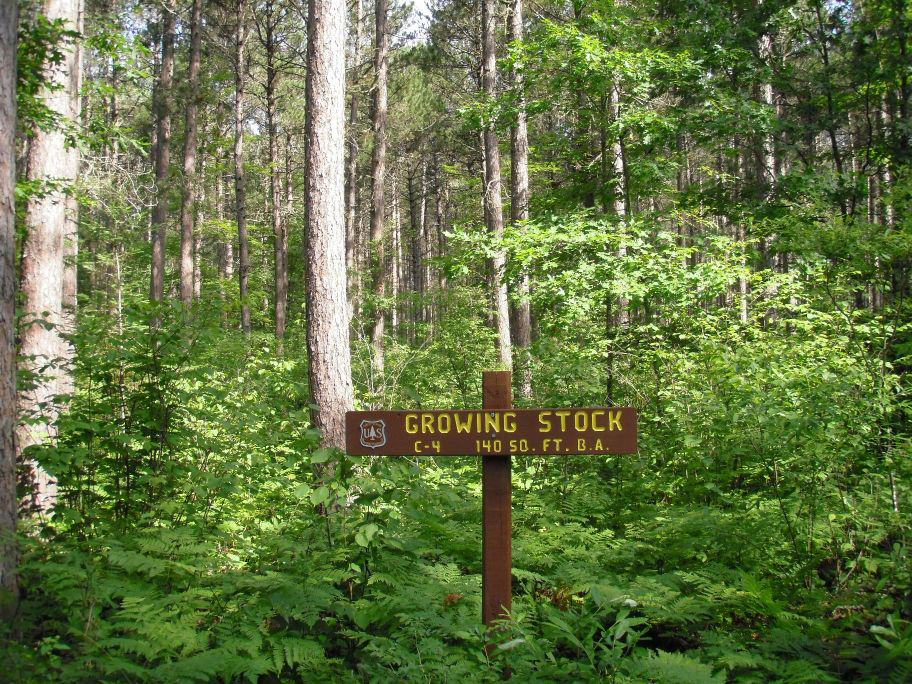
Silvicultural strategies for enhancing climate change adaptation and mitigation
Research uses dendrochronological approaches, long-term data collections, and large-scale manipulative experiments to assesses the differential response of managed and unmanaged forest systems of varying complexity to past disturbance events and variations in climate, forest health, and disturbance conditions. Two main projects have been the primary focus of this research: 1) an examination of patterns of inter-annual variation in productivity in response to past drought and disturbance across long-term silviculture experiments within the Lake States, New England, Arizona, and South Dakota and 2) the Adaptive Silviculture for Climate Change project, which evaluates the impacts and efficacy of operational scale forest management strategies for reducing climate change and forest health effects on forests in Minnesota and northern New Hampshire.†
Project collaborators
USDA Forest Service (M. Battaglia, L. Iverson, M. Janowiak, L. Kenefic,
T. Ontl, B. Palik, C. Swanston, C. Woodall), UMaine (S. Fraver), UMN
(M. Curzon), USGS (J. Bradford), Colorado State University (L. Nagel),
Dartmouth College (M. Ayres, K. Evans, R. Howarth, D. Lutz).
Selected publications
Andrews, C. M., A. W. D’Amato, S. Fraver, B. Palik, M. A. Battaglia, and J. B. Bradford. 2020. Low stand density moderates growth declines during hot droughts in semi-arid forests. Journal of Applied Ecology 57:1089-1102. PDF
Curzon, M. T., C. C. Kern, S. C. Baker, B. J. Palik, and A. W. D’Amato. 2020. Retention forestry influences understory diversity and functional identity. Ecological Applications 30:e02097. PDF
D’Amato, A. W., E. J. Jokela, K. L. O’Hara, and J. N. Long. 2018. Silviculture in the United States: an amazing period of change over the past 30 years. Journal of Forestry 116:55-67. PDF
Fahey, R. T., B. C. Alveshere, J. I. Burton, A. W. D’Amato, Y. L. Dickinson, W. S. Keeton, C. C. Kern, A. J. Larson, B. J. Palik, K. J. Puettmann, M. R. Saunders, C. R. Webster, J. W. Atkins, C. M. Gough, and B. S. Hardiman. 2018. Shifting conceptions of complexity in forest management and silviculture. Forest Ecology and Management 421:59-71. PDF
Ontl, T. A., C. Swanston, L. A. Brandt, P. R. Butler, A. W. D’Amato, S. D. Handler, M. K. Janowiak, and P. D. Shannon. 2018. Adaptation pathways: ecoregion and land ownership influences on climate adaptation decision-making in forest management. Climatic Change 146:75-88. PDF
Bottero, A., A.W. D’Amato, B.J. Palik, J.B. Bradford, S. Fraver, M.A. Battaglia, and L.A. Asherin. 2017. Density-dependent vulnerability of forest ecosystems to drought. Journal of Applied Ecology 54:1605-1614. PDF
Curzon, M., S. Baker, C. Kern, B. Palik, and A.W. D’Amato. 2017. Influence of mature overstory trees on adjacent 12-Year regeneration and the woody understory: aggregated retention versus intact forest. Forests 8:31. PDF
Curzon, M. T., A. W. D’Amato, S. Fraver, B. J. Palik, A. Bottero, J. R. Foster, and K. E. Gleason. 2017. Harvesting influences functional identity and diversity over time in forests of the northeastern U.S.A. Forest Ecology and Management 400:93-99. PDF
D’Amato, A. W., B. J. Palik, J. F. Franklin, and D. R. Foster. 2017. Exploring the origins of ecological forestry in North America. Journal of Forestry 115:126-127. PDF
Gleason, K. E., J. B. Bradford, A. Bottero, A. W. D’Amato, S. Fraver, B. J. Palik, M. A. Battaglia, L. Iverson, L. Kenefic, and C. C. Kern. 2017. Competition amplifies drought stress in forests across broad climatic and compositional gradients. Ecosphere 8:e01849-n/a. PDF
Itter, M. S., A. O. Finley, A. W. D’Amato, J. R. Foster, and J. B. Bradford. 2017. Variable effects of climate on forest growth in relation to climate extremes, disturbance, and forest dynamics. Ecological Applications 27:1082-1095. PDF
Kabrick, J. M., K. L. Clark, A. W. D’Amato, D. C. Dey, L. S. Kenefic, C. C. Kern, B. O. Knapp, D. A. MacLean, P. Raymond, and J. D. Waskiewicz. 2017. Managing hardwood-softwood mixtures for future forests in eastern North America: assessing suitability to projected climate change. Journal of Forestry 115:190-201. PDF
Nagel, L. M., B. J. Palik, M. A. Battaglia, A. W. D’Amato, J. M. Guldin, C. W. Swanston, M. K. Janowiak, M. P. Powers, L. A. Joyce, C. I. Millar, D. L. Peterson, L. M. Ganio, C. Kirschbaum, and M. R. Roske. 2017. Adaptive silviculture for climate change: a national experiment in manager-scientist partnerships to apply an adaptation framework. Journal of Forestry 115:167-178. PDF
Palik, B. J., and A. W. D’Amato. 2017. Ecological forestry: much more than retention harvesting. Journal of Forestry 115:51-53. PDF
Clark, J. S., L. Iverson, C. W. Woodall, C. D. Allen, D. M. Bell, D. C. Bragg, A. W. D’Amato, F. W. Davis, M. H. Hersh, I. Ibanez, S. T. Jackson, S. Matthews, N. Pederson, M. Peters, M. W. Schwartz, K. M. Waring, and N. E. Zimmermann. 2016. The impacts of increasing drought on forest dynamics, structure, and biodiversity in the United States. Global Change Biology 22:2329-2352. PDF
*Dymond, S. F., A. W. D’Amato, R. K. Kolka, P. V. Bolstad, S. D. Sebestyen, and J. B. Bradford. 2016. Growth–climate relationships across topographic gradients in the northern Great Lakes. Ecohydrology 9:918-929. PDF
Foster, J.R., A.O. Finley, A.W. D’Amato, J.B. Bradford, and S. Banejee. 2016. Predicting tree biomass growth in the temperate–boreal ecotone: Is tree size, age, competition, or climate response most important? Global Change Biology 22:2138-2151. PDF
Bradford, J.B., N.R. Jensen, G.M. Domke, and A.W. D’Amato. 2013. Potential increases in natural disturbance rates could offset forest management impacts on ecosystem carbon stocks. Forest Ecology and Management 308: 178-187. PDF
D’Amato, A.W., J. Bradford, S. Fraver, and B. Palik. 2013. Effects of thinning on drought vulnerability and climate response in north temperate forest ecosystems. Ecological Applications 23: 1735-1742. PDF
Bradford, J., and A.W. D’Amato. 2012. Quantifying tradeoffs in multi-objective land management. Frontiers in Ecology and the Environment 10: 210-217. PDF
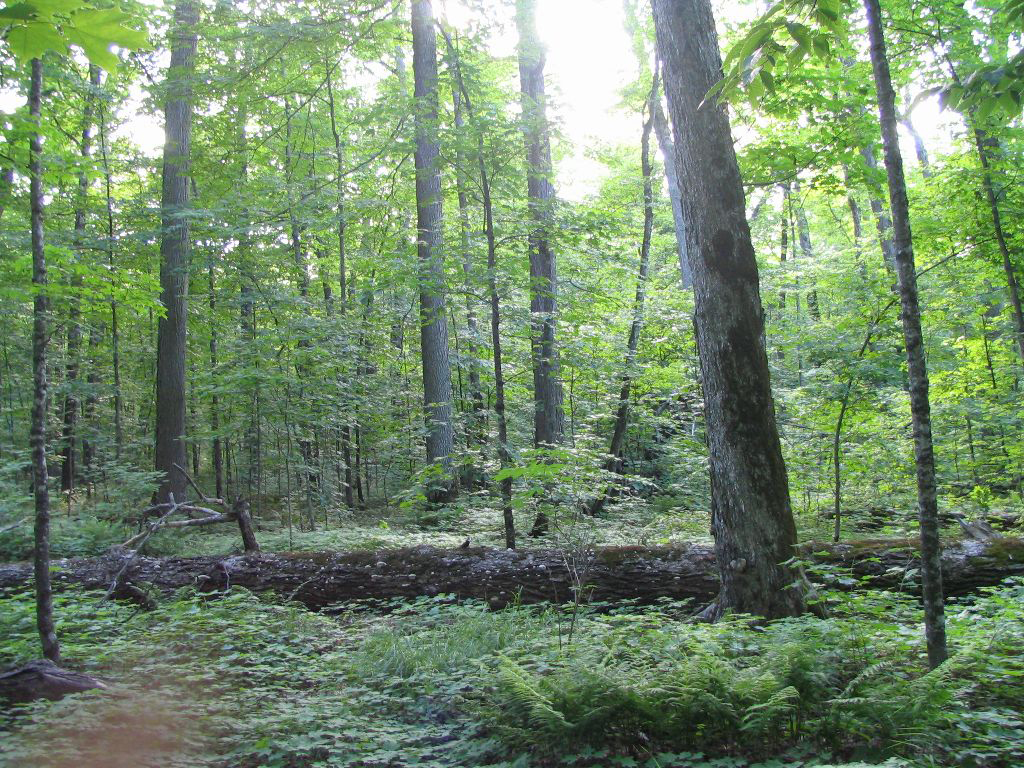
Structural development and regeneration dynamics of northern hardwood forests
Research focuses on two main projects: 1) an examination of the long-term structural and regeneration dynamics of managed northern hardwood forests in the upper Lake States and northeastern US, and 2) an evaluation of silvicultural treatments for restoring old-growth structural and compositional conditions to second-growth northern hardwood forests in Wisconsin, northeastern Minnesota, and southern New England.
Project collaborators
USDA Forest Service (L. Kenefic, B. Leak, B. Palik, C. Kern, M. Twery,
M. Yamasaki), SUNY-ESF (R. Nyland), Wisconsin DNR (D. Bronson, T.
Knoot), The Nature Conservancy (M. Cornett, C. Dunham, and M. White),
UMass (P. Catanzaro), VT ANR (L. Bushey, S Machinist).
Selected publications
*Bolton, N. W., and A. W. D’Amato. 2019. Herbaceous vegetation responses to gap size within natural disturbance-based silvicultural systems in northeastern Minnesota, USA. Forests 10:111. PDF
*Byerly, H., A. W. D’Amato, S. Hagenbuch, and B. Fisher. 2019. Social influence and forest habitat conservation: Experimental evidence from Vermont’s maple producers. Conservation Science and Practice 1:e98. PDF
Lewandowski, T. E., J. A. Forrester, D. J. Mladenoff, A. W. D’Amato, D. S. A. Fassnacht, E. Padley, and K. J. Martin. 2019. Do biological legacies moderate the effects of forest harvesting on soil microbial community composition and soil respiration. Forest Ecology and Management 432:298-308. PDF
*Reuling, L. F., A. W. D’Amato, B. J. Palik, K. J. Martin, and D. S. A. Fassnacht. 2019. Initial tree regeneration response to natural-disturbance-based silviculture in second-growth northern hardwood forests. Canadian Journal of Forest Research 49:628-639. PDF
Kern, C. C., J. I. Burton, P. Raymond, A. W. D’Amato, W. S. Keeton, A. A. Royo, M. B. Walters, C. R. Webster, and J. L. Willis. 2017. Challenges facing gap-based silviculture and possible solutions for mesic northern forests in North America. Forestry 90:4-17. PDF
*Pszwaro, J. L., A. W. D’Amato, T. E. Burk, M. B. Russell, B. J. Palik, and T. F. Strong. 2016. Analysis of stand basal area development of thinned and unthinned Acer rubrum forests in the upper Great Lakes region, USA. Canadian Journal of Forest Research 46:645-655. PDF
D’Amato, A.W., P. Catanzaro, L.S. Fletcher. 2015. Early regeneration and structural responses to patch selection and structural retention within second-growth northern hardwoods. Forest Science 61:183-189. PDF
Fassnacht, K.S., D.R. Bronson, B.J. Palik, A.W. D’Amato, C.G. Lorimer, and K.J. Martin. 2015. Accelerating the development of old-growth characteristics in second-growth northern hardwoods. USDA Forest Service Northern Research Station GTR NRS-144. 33 pp. PDF
Kern, C.C., A.W. D’Amato, and T.F. Strong. 2013. Diversifying the composition and structure of managed, late-successional forests with harvest gaps: What is the optimal gap size? Forest Ecology and Management 304: 110-120. PDF
Gronewold, C., A.W. D’Amato, and B.J. Palik. 2012. Relationships between growth, quality, and stocking within managed old-growth northern hardwoods. Canadian Journal of Forest Research 42: 1115-1125. PDF
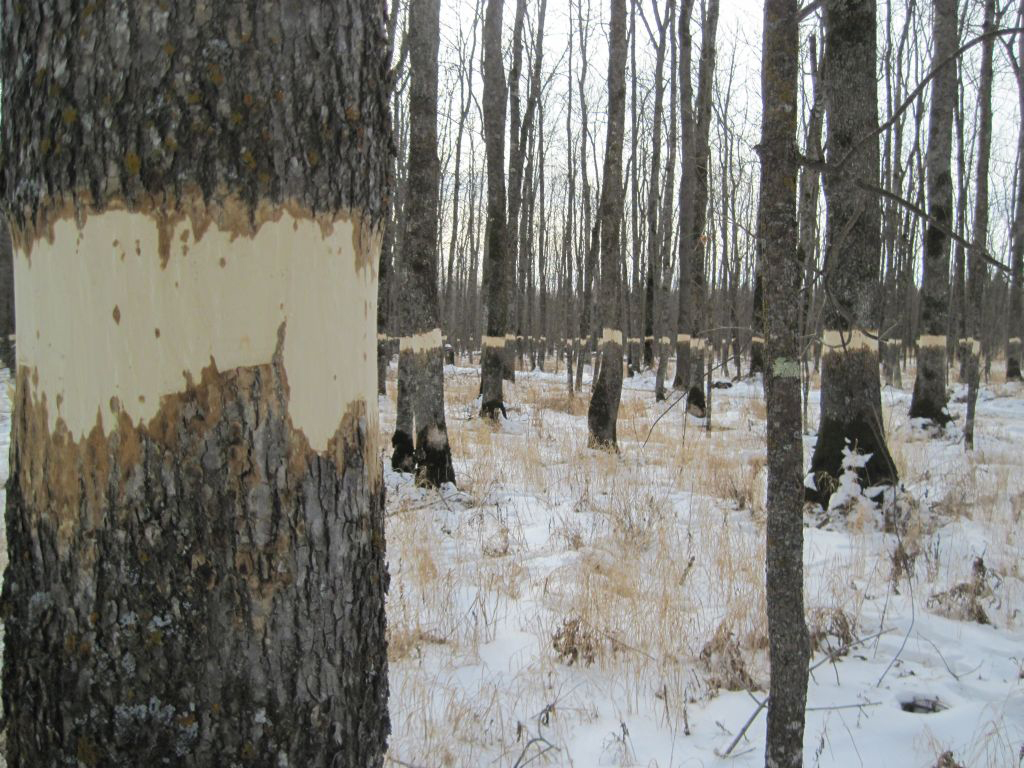
Evaluating the ecological and hydrological impacts of emerald ash borer on black ash systems
Research evaluates the potential impacts of emerald ash borer (EAB) invasion on the vegetation, hydrology, and biodiversity of lowland black ash forests within the upper Great Lakes region. Project uses large-scale manipulative experiments designed to emulate EAB impacts, as well as evaluate silvicultural strategies for managing black ash ecosystems in the face of this threat. A companion project is examining the dynamics of old-growth black ash in the upper Lake States.
Project collaborators
USDA Forest Service (B. Palik, S. Eggert), MFRC (R. Slesak), UMN (M.
Youngquist), UMaine (S. Fraver), Chippewa National Forest (G. Swanson),
Wisconsin DNR (D. Bronson, G. Edge, T. Knoot, C. Matula).
Selected publications
*Toczydlowski, A. J. Z., R. A. Slesak, R. K. Kolka, R. T. Venterea, A. W. D’Amato, and B. J. Palik. 2020. Effect of simulated emerald ash borer infestation on nitrogen cycling in black ash (Fraxinus nigra) wetlands in northern Minnesota, USA. Forest Ecology and Management 458:117769. PDF
Engelstad, P. S., M. J. Falkowski, A. W. D’Amato, R. A. Slesak, B. J. Palik, G. M. Domke, and M. B. Russell. 2019. Mapping black ash dominated stands using geospatial and forest inventory data in northern Minnesota, USA. Canadian Journal of Forest Research 49:892-902. PDF
D’Amato, A. W., B. J. Palik, R. A. Slesak, G. Edge, C. Matula, and D. R. Bronson. 2018. Evaluating adaptive management options for black ash forests in the face of emerald ash borer invasion. Forests 9:348-365. PDF
Diamond, J. S., D. L. McLaughlin, R. A. Slesak, A. W. D’Amato, and B. J. Palik. 2018. Forested versus herbaceous wetlands: Can management mitigate ecohydrologic regime shifts from invasive emerald ash borer? Journal of Environmental Management 222:436-446. PDF
Kolka, R. K., A. W. D’Amato, J. W. Wagenbrenner, R. A. Slesak, T. G. Pypker, M. B. Youngquist, A. R. Grinde, and B. J. Palik. 2018. Review of ecosystem level impacts of emerald ash borer on black ash wetlands: what does the future hold? Forests 9:179-194. PDF
*Looney, C. E., A. W. D’Amato, S. Fraver, B. J. Palik, and L. E. Frelich. 2018. Interspecific competition limits the realized niche of Fraxinus nigra along a waterlogging gradient. Canadian Journal of Forest Research 48:1292-1301. PDF
*Looney, C. E., A. W. D’Amato, B. J. Palik, and R. Slesak. 2017. Canopy treatment influences growth of replacement tree species in Fraxinus nigra forests threatened by emerald ash borer in Minnesota, USA. Canadian Journal of Forest Research 47:183-192. PDF
*Looney, C. E., A. W. D’Amato, B. J. Palik, R. A. Slesak, and M. A. Slater. 2017. The response of Fraxinus nigra forest ground-layer vegetation to emulated emerald ash borer mortality and management strategies in northern Minnesota, USA. Forest Ecology and Management 389:352-363. PDF
*Looney, C. E., A. W. D’Amato, S. Fraver, B. J. Palik, and M. R. Reinikainen. 2016. Examining the influences of tree-to-tree competition and climate on size-growth relationships in hydric, multi-aged Fraxinus nigra stands. Forest Ecology and Management 375:238-248. PDF
Looney, C. E., A. W. D’Amato, B. J. Palik, and R. A. Slesak. 2015. Overstory treatment and planting season affect survival of replacement tree species in emerald ash borer threatened Fraxinus nigra forests in Minnesota, USA. Canadian Journal of Forest Research 45:1728-1738. PDF
Telander, A.C., R.A. Slesak, A.W. D’Amato, B.J. Palik, K.N. Brooks, and C.F. Lenhart. 2015. Sap flow of black ash in wetland forests of northern Minnesota, USA: Hydrologic implications of tree mortality due to emerald ash borer. Agricultural and Forest Meteorology 206: 4-11. PDF
Slesak, R.A., C.F. Lenhart, K.N. Brooks, A.W. D’Amato, and B.J. Palik. 2014. Water table response to harvesting and simulated emerald ash borer mortality in black ash wetlands in Minnesota, USA. Canadian Journal of Forest Research 44: 961-968. PDF
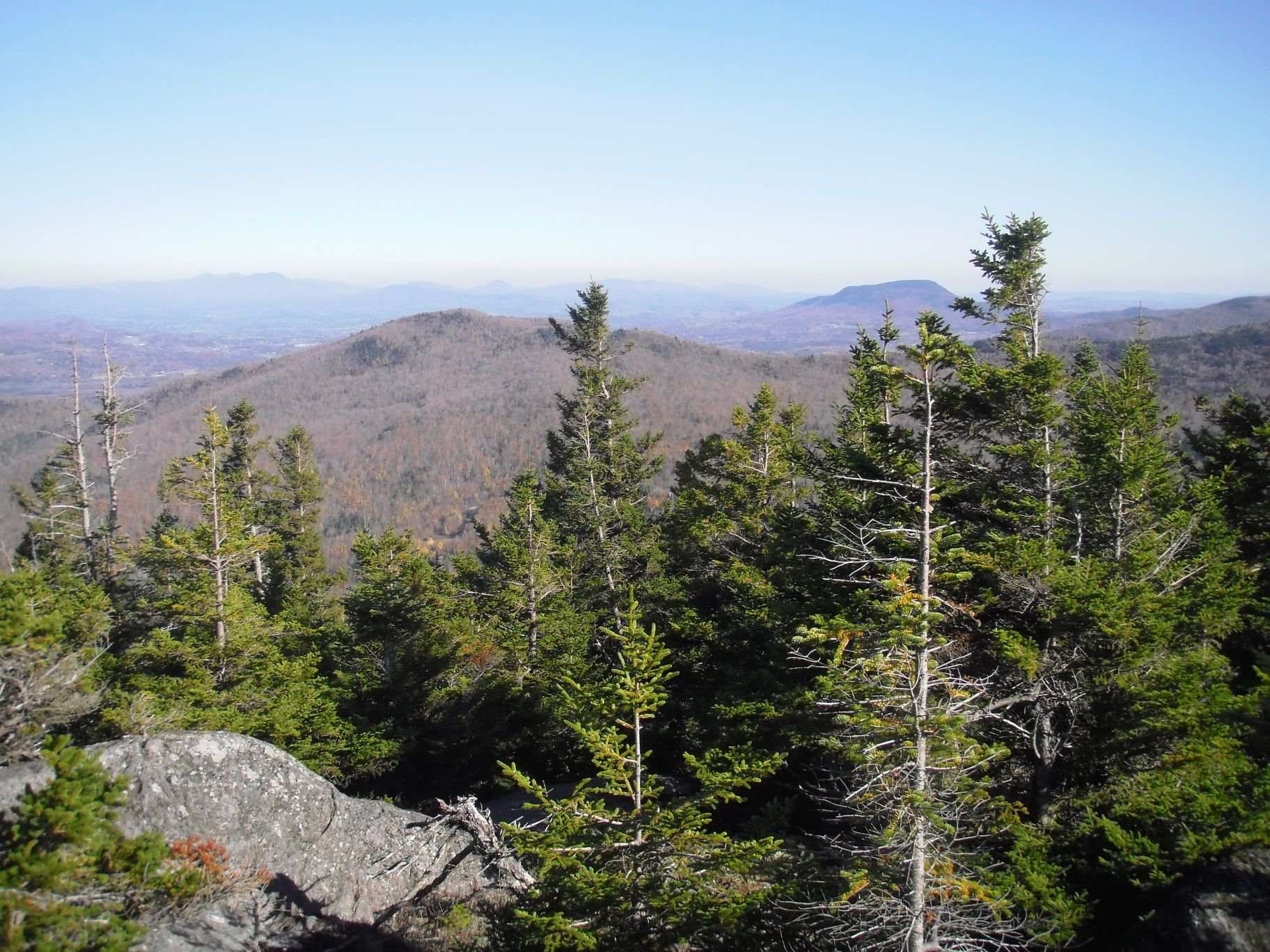
Modeling effects of climate change, management, and disturbance on northern New England forest ecosystems
Research is integrating long-term vegetation and bird data into landscape simulation and habitat distribution models to identify refugia sites most likely to support vulnerable forest habitats and associated bird species over the long-term under projected climate change scenarios. In addition, the impacts of different management regimes, wind, and insect defoliation on future forest conditions are also being explored for the Green Mountain National Forest, Marsh Billings Rockefeller National Historic Park, and across northern Vermont and New Hampshire.
Project collaborators
UVM (J. Foster, J. Pontius), USDA Forest Service (B. Palik, D. King, B.
Sturtevant), UMaine (A. Weiskittel, E. Simons-Legaard), UMass (B.
Deluca, J. Ralston); USGS (T. Morelli), NPS (K. Jones), Vermont Center
for Ecostudies (K. MacFarland, C. Rimmer).
Selected publications
Sommerfeld, A., C. Senf, B. Buma, A. W. D’Amato, T. Després, I. Díaz-Hormazábal, S. Fraver, L. E. Frelich, Á. G. Gutiérrez, S. J. Hart, B. J. Harvey, H. S. He, T. Hlásny, A. Holz, T. Kitzberger, D. Kulakowski, D. Lindenmayer, A. S. Mori, J. Müller, J. Paritsis, G. L. W. Perry, S. L. Stephens, M. Svoboda, M. G. Turner, T. T. Veblen, and R. Seidl. 2018. Patterns and drivers of recent disturbances across the temperate forest biome. Nature Communications 9:4355. PDF
Foster, J. R., and A. W. D’Amato. 2015. Montane forest ecotones moved downslope in northeastern USA in spite of warming between 1984 and 2011. Global Change Biology 21:4497-4507. PDF
Russell, M.B., A.W. D’Amato, M.A. Albers, C.W. Woodall, K.J. Puettmann, M.R. Saunders, and C.L. VanderSchaaf. 2015. Performance of the Forest Vegetation Simulator in managed white spruce plantations influenced by eastern spruce budworm in northern Minnesota. Forest Science 61:723-730. PDF
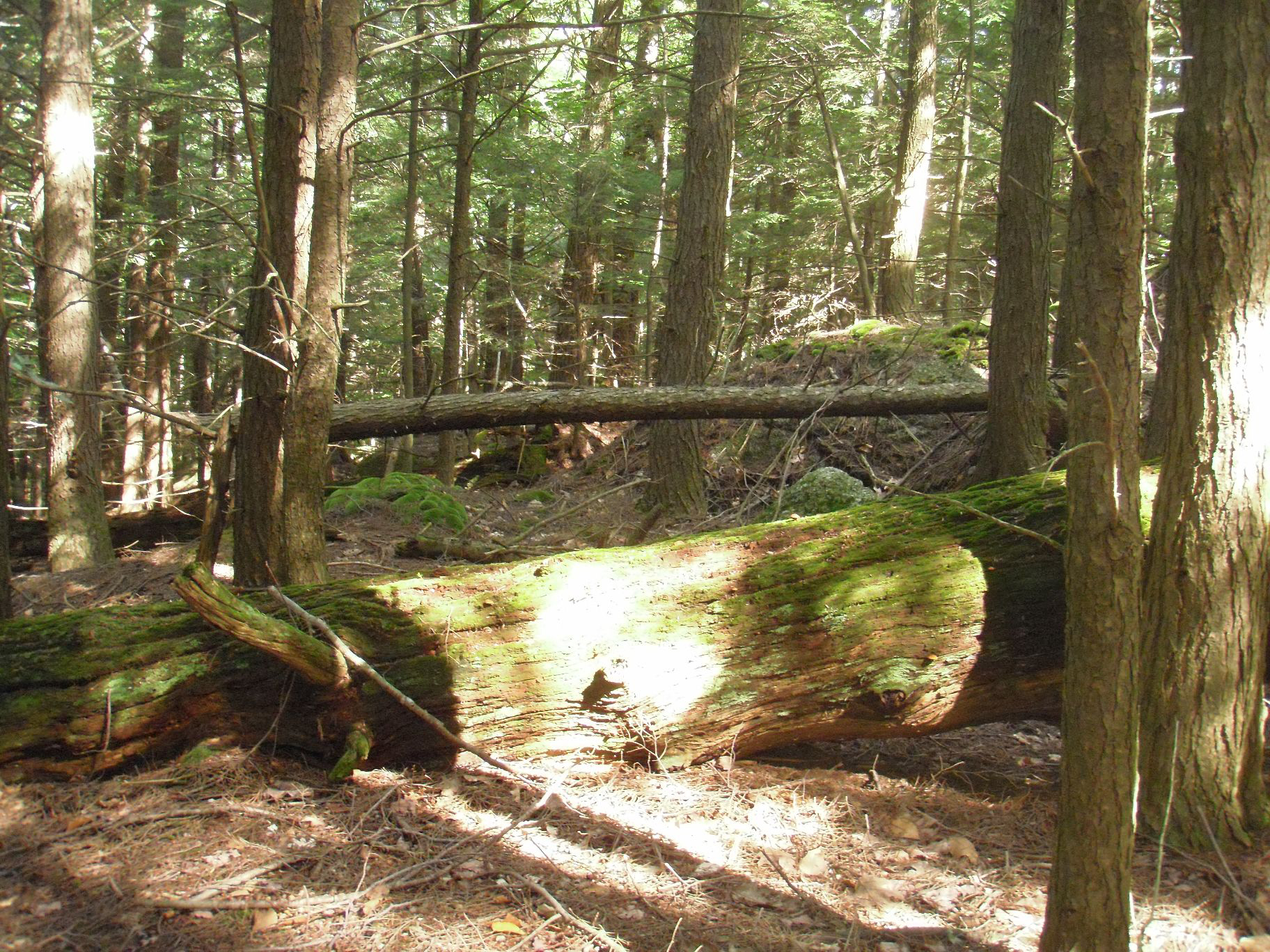
Forest carbon monitoring and dynamics across the eastern United States
Research is collaborative effort with Dr. Chris Woodall at the USDA Forest Service Northern Research Station to quantify the dynamics of forest carbon across broad spatial scales in the coterminous U.S. Specific areas of focus include modeling coarse woody debris dynamics as influenced by factors including disturbance history, forest stocking, and climate, and quantifying patterns of biomass and volume development across diverse forest types.
Other project collaborators
UVM (W. Ma, J. Foster, J. Pontius), UMN (M. Russell), UMaine (S.
Fraver), Harvard Forest (A. Barker-Plotkin, D. Foster, D. Orwig) and
USDA Forest Service (G. Domke, B. Walters).
Selected publications
Ma, W., G. M. Domke, C. W. Woodall, and A. W. D’Amato. 2020. Contemporary forest carbon dynamics in the northern U.S. associated with land cover changes. Ecological Indicators 110:105901. PDF
Ma, W., G. M. Domke, C. W. Woodall, and A. W. D’Amato. 2019. Land use changes, disturbances, and their interactions on future forest aboveground biomass dynamics in the northern US. Forests 10:606. PDF
Pregitzer, C. C., M. S. Ashton, S. Charlop-Powers, A. W. D’Amato, B. R. Frey, B. Gunther, R. A. Hallett, K. S. Pregitzer, C. W. Woodall, and M. A. Bradford. 2019. Defining and assessing urban forests to inform management and policy. Environmental Research Letters 14:085002. PDF
Fraver, S., M. J. Ducey, C. W. Woodall, A. W. D’Amato, A. M. Milo, and B. J. Palik. 2018. Influence of transect length and downed woody debris abundance on precision of the line-intersect sampling method. Forest Ecosystems 5:39. PDF
Fraver, S., M. Tajvidi, A. W. D’Amato, D. L. Lindner, J. A. Forrester, and A. M. Milo. 2018. Woody material structural degradation through decomposition on the forest floor. Canadian Journal of Forest Research 48:111-115. PDF
Ma, W., G. M. Domke, A. W. D’Amato, C. W. Woodall, B. F. Walters, and R. K. Deo. 2018. Using matrix models to estimate aboveground forest biomass dynamics in the eastern USA through various combinations of LiDAR, Landsat, and forest inventory data. Environmental Research Letters 13:125004. PDF
Ma, W., C. W. Woodall, G. M. Domke, A. W. D’Amato, and B. F. Walters. 2018. Stand age versus tree diameter as a driver of forest carbon inventory simulations in the northeastern U.S. Canadian Journal of Forest Research 48:1135-1147. PDF
Woodall, C. W., B. F. Walters, M. B. Russell, J. W. Coulston, G. M. Domke, A. W. D’Amato, and P. A. Sowers. 2016. A tale of two forest carbon assessments in the eastern United States: forest use versus cover as a metric of change. Ecosystems 19:1401-1417. PDF
Forrester, J. A., D. J. Mladenoff, A. W. D’Amato, S. Fraver, D. L. Lindner, N. J. Brazee, M. K. Clayton, and S. T. Gower. 2015. Temporal trends and sources of variation in carbon flux from coarse woody debris in experimental forest canopy openings. Oecologia 179:889-900. PDF
Russell, M. B., G. M. Domke, C. W. Woodall, and A. W. D’Amato. 2015. Comparisons of allometric and climate-derived estimates of tree coarse root carbon stocks in forests of the United States. Carbon Balance and Management 10:20. PDF
Russell, M.B., S. Fraver, T. Aakala, J.H. Gove, C.W. Woodall, A.W. D’Amato, and M.J. Ducey. 2015. Quantifying carbon stores and decomposition in dead wood: a review. Forest Ecology and Management 350:107-128. PDF
Woodall, C.W., M.B. Russell, B.F. Walters, A.W. D’Amato, S. Fraver, and G.M. Domke. 2015. Net carbon flux of dead wood in forests of the Eastern US. Oecologia 177:861-874. PDF
Woodall, C. W., B. F. Walters, J. W. Coulston, A. W. D’Amato, G. M. Domke, M. B. Russell, and P. A. Sowers. 2015. Monitoring network confirms land use change is a substantial component of the forest carbon sink in the eastern United States. Scientific Reports 5:17028. PDF
Russell, M.B., C.W. Woodall, A.W. D’Amato, S. Fraver, and J.B. Bradford. 2014a. Technical note: Linking climate change and downed woody debris decomposition across forests of the eastern United States. Biogeosciences 11: 6417-6425. PDF
Russell, M.B., C.W. Woodall, S. Fraver, A.W. D’Amato, G.M. Domke, and K.E. Skog. 2014b. Residence time and decay for downed woody debris biomass/carbon in eastern US forests. Ecosystems 17: 765-777. PDF
Russell, M.B., C.W. Woodall, A.W. D’Amato, G.M. Domke, and S.S. Saatchi. 2014c. Beyond mean functional traits: Influence of functional trait profiles on forest structure, production, and mortality across the eastern US. Forest Ecology and Management 328:1-9. PDF
Fraver, S., A. Milo, J. Bradford, A.W. D’Amato, L. Kenefic, B. Palik, C. Woodall, and J. Brissette. 2013. Woody debris volume depletion through decay: implications for biomass and carbon accounting. Ecosystems 16: 1262-1272. PDF
Russell, M., C. Woodall, S. Fraver, and A.W. D’Amato. 2013. Estimates of coarse woody debris decay class transitions for forests across the eastern United States. Ecological Modeling 251: 22-31. PDF
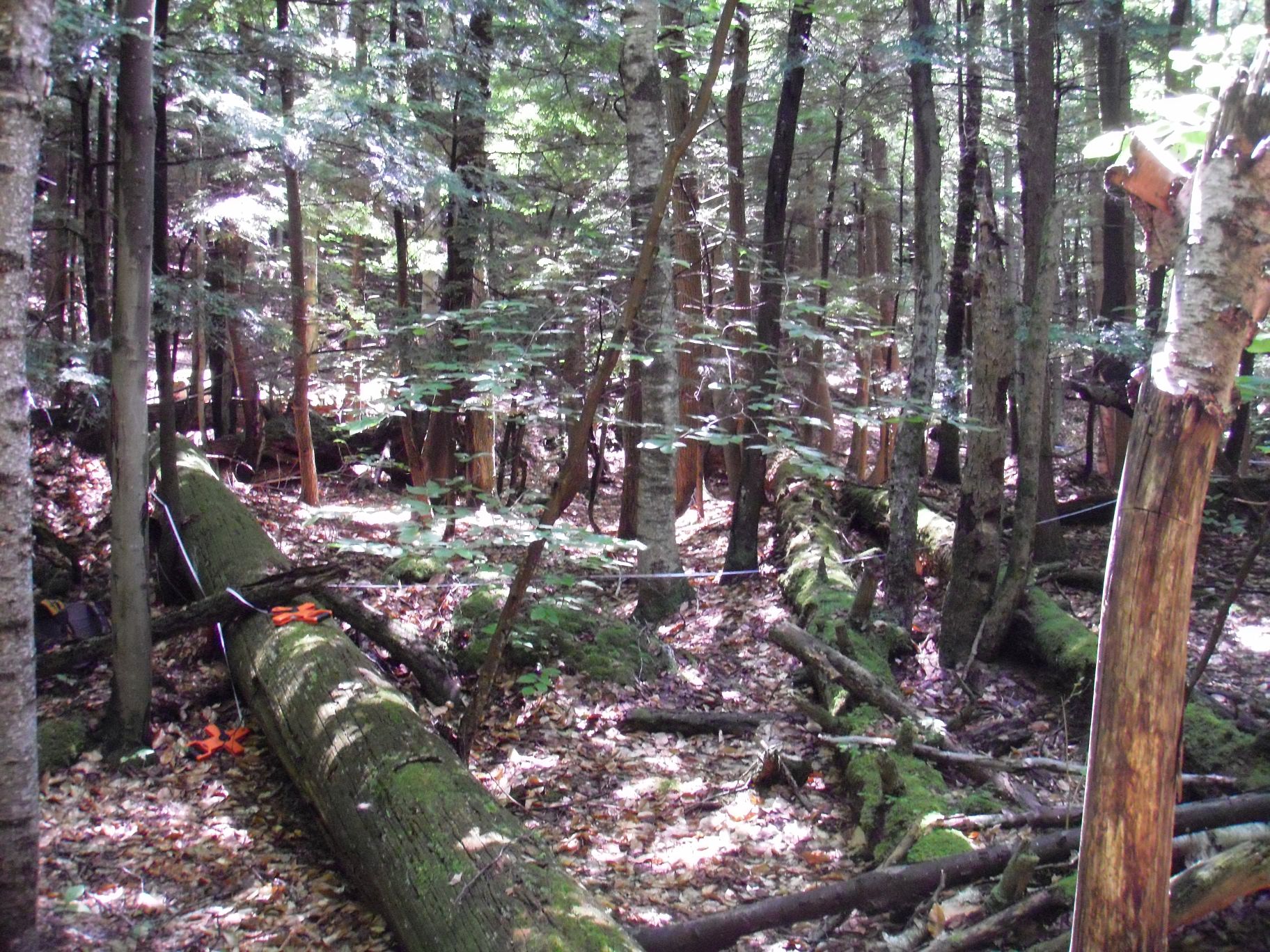
Salvage logging impacts on forest recovery following high severity natural disturbance
Research uses a series of studies in sub-boreal and temperate forests to examine the impacts of salvage logging following severe wind events on forest compositional and structural development. Studies include a long-term examination of salvage logging impacts following the 1938 hurricane in old-growth hemlock-white pine forests in southern NH, the interactive effects of wind, salvage logging, and fire in sub-boreal jack pine forests in northeastern MN, and salvage logging impacts following tornado disturbance in hemlock-oak forests in central MA.
Project collaborators
UMaine (S. Fraver), Harvard Forest (A. Barker-Plotkin, D. Foster, D.
Orwig), USDA Forest Service (M. Janowiak, B. Palik), USGS (J. Bradford),
and TNC (L. Marx).
Selected publications
*Santoro, J. A., and A. W. D’Amato. 2019. Structural, compositional, and functional responses to tornado and salvage logging disturbance in southern New England hemlock-hardwood forests. Forest Ecology and Management 444:138-150. PDF
*Sass, E. M., A. W. D’Amato, and D. R. Foster. 2018. Lasting legacies of historical clearcutting, wind, and salvage logging on old-growth Tsuga canadensis–Pinus strobus forests. Forest Ecology and Management 419-420:31-41. PDF
*Sass, E. M., A. W. D’Amato, D. R. Foster, A. Barker Plotkin, S. Fraver, P. K. Schoonmaker, and D. A. Orwig. 2018. Long-term influence of disturbance-generated microsites on forest structural and compositional development. Canadian Journal of Forest Research 48:958-965. PDF
D’Amato, A. W., D. A. Orwig, D. R. Foster, A. Barker Plotkin, P. K. Schoonmaker, and M. R. Wagner. 2017. Long-term structural and biomass dynamics of virgin Tsuga canadensis–Pinus strobus forests after hurricane disturbance. Ecology 98:721-733. PDF
Bradford, J.B., S. Fraver, A. Milo, A.W. D’Amato, B. Palik, and D. Shinneman. 2012. Effects of multiple interacting disturbances and salvage logging on forest carbon stocks. Forest Ecology and Management 267: 209-214.
D’Amato, A.W., S. Fraver, J. Bradford, B. Palik, and *L. Dunn. 2011. Singular and interactive effects of blowdown, salvage logging, and wildfire in sub-boreal pine systems. Forest Ecology and Management 262:2070-2078.
Fraver, S. T. Jain, J.B. Bradford, A.W. D’Amato, D. Kastendick, B. Palik, D. Shinneman, and J. Stanovick. 2011. The efficacy of salvage logging in reducing subsequent fire severity in conifer-dominated forests of Minnesota, USA. Ecological Applications 21: 1895-1901.
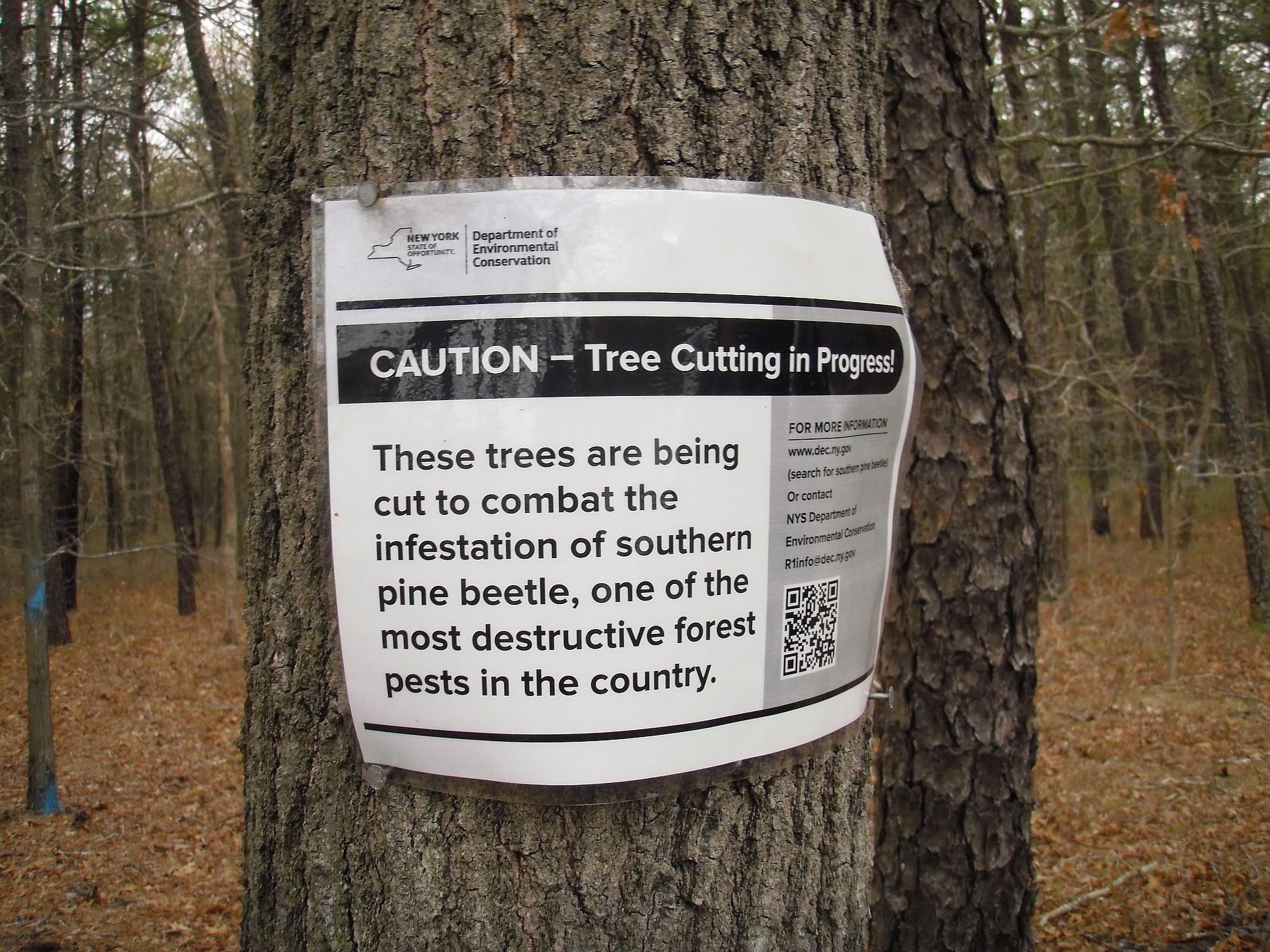
Examining the influence of novel range expansion of southern pine beetle on the long-term dynamics of pitch pine communities in the northeastern US
Research is examining the effects of the recent northward range expansion of southern pine beetle on the long-term structure and composition of pitch pine-dominated forests on Long Island, NY. Studies include an examination of the influence of management activities aimed at reducing SPB impacts on forest regeneration and fuel loading and projections of future suitable habitat for this important insect pest.
Project collaborators
USDA Forest Service S&P (K. Dodds), Columbia Univ. (E. Coffel, R. Horton, C. Lesk).
Selected publications
*Heuss, M., A. W. D’Amato, and K. J. Dodds. 2019. Northward expansion of southern pine beetle generates significant alterations to forest structure and composition of globally rare Pinus rigida forests. Forest Ecology and Management 434:119-130. PDF
Dodds, K. J., C. F. Aoki, A. Arango-Velez, J. Cancelliere, A. W. D’Amato, M. F. DiGirolomo, and R. J. Rabaglia. 2018. Expansion of Southern Pine Beetle into Northeastern Forests: Management and Impact of a Primary Bark Beetle in a New Region. Journal of Forestry 116:178-191. PDF
Lesk, C., E. Coffel, A. W. D’Amato, K. Dodds, and R. Horton. 2017. Threats to North American forests from southern pine beetle with warming winters. Nature Climate Change 7:713. PDF
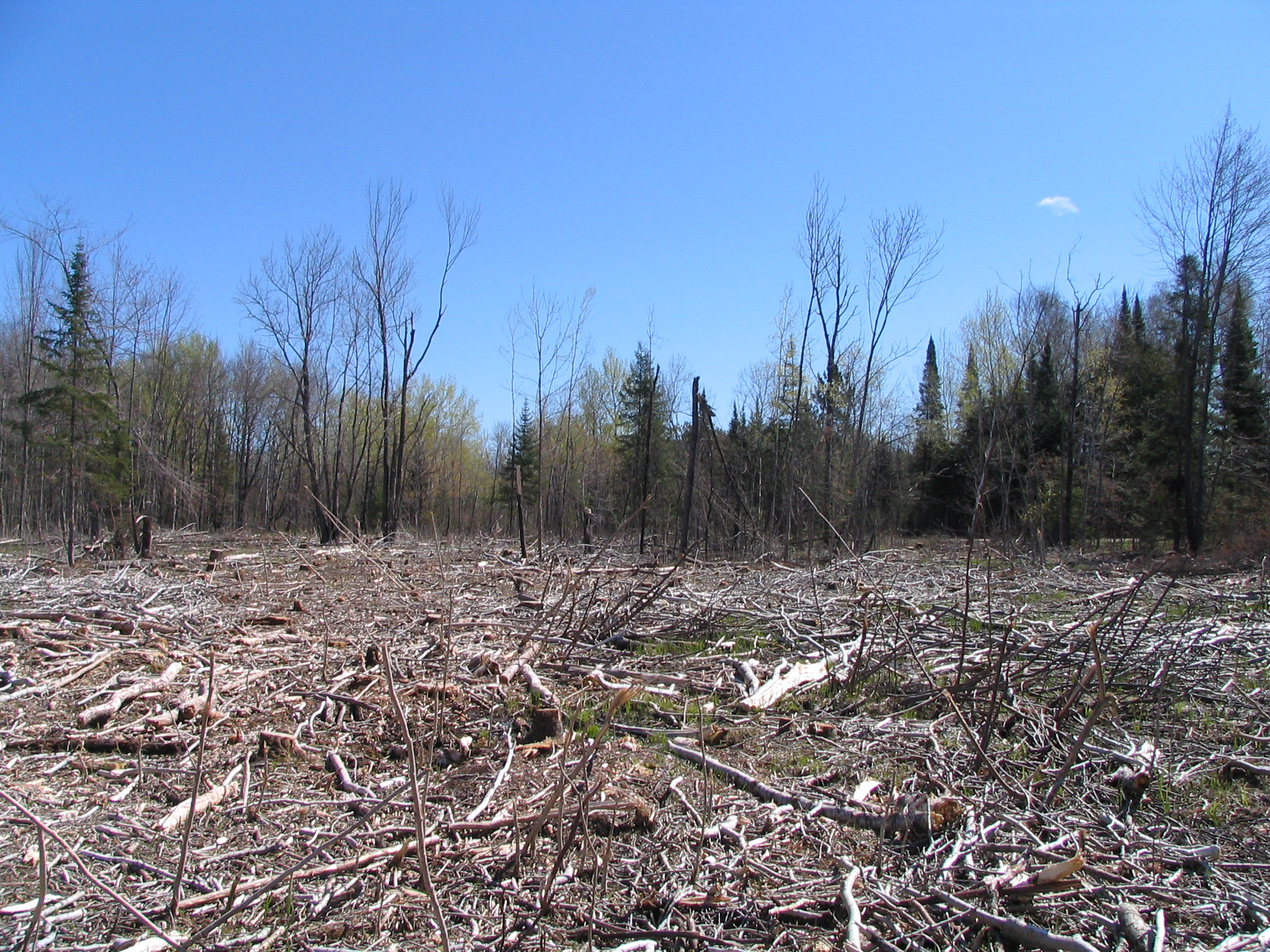
Impacts of woody biomass harvesting on the biodiversity and productivity of forest systems
Research is centered around several large-scale silvicultural manipulations examining the importance of green tree and woody debris legacies in minimizing the impacts of woody biomass harvesting on forest nutrient and carbon pools and deadwood-dependent organisms within aspen and jack pine forests. Work also takes advantage of several USDA Forest Service Long-Term Soil Productivity installments within MN and MI.
Project collaborators
Becker, Hubbard, and St. Louis County Land Departments, MN and WI DNR,
USGS (J. Bradford,), USDA Forest Service (R. Kolka, D. Lindner, B.
Palik, M. Ostry), MFRC (R. Slesak), UMN (S. Kukrety), UMaine (S.
Fraver), UW (D. Mladenoff and J. Forrester), UMO (F. Aguilar), UMass (N.
Brazee).
Selected publications
Grinde, A. R., R. A. Slesak, A. W. D’Amato, and B. P. Palik. 2020. Effects of tree retention and woody biomass removal on bird and small mammal communities. Forest Ecology and Management 465:118090. PDF
Kurth, V. J., A. W. D’Amato, J. B. Bradford, B. J. Palik, and C. E. Looney. 2020. Assessing the ecological impacts of biomass harvesting along a disturbance severity gradient. Ecological Applications 30:e02042. PDF
*Lewandowski, T. E., J. A. Forrester, D. J. Mladenoff, E. Marin-Spiotta, A. W. D’Amato, B. J. Palik, and R. K. Kolka. 2019. Long term effects of intensive biomass harvesting and compaction on the forest soil ecosystem. Soil Biology and Biochemistry 137:107572. PDF
Slesak, R.A., B.J. Palik, A.W. D’Amato, and V.J. Kurth. 2017. Changes in soil physical and chemical properties following organic matter removal and compaction: 20-year response of the aspen Lake-States Long Term Soil Productivity installations. Forest Ecology and Management 392: 68-77. PDF
Cai, Z., L. L. Narine, A. W. D’Amato, and F. X. Aguilar. 2016. Attitudinal and revenue effects on non-industrial private forest owners’ willingness-to-harvest timber and woody biomass. Forest Policy and Economics 63:52-61. PDF
*Curzon, M. T., A. W. D’Amato, and B. J. Palik. 2016. Bioenergy harvest impacts to biodiversity and resilience vary across aspen-dominated forest ecosystems in the Lake States region, USA. Applied Vegetation Science 19:667-678. PDF
Kukrety, S., D.C. Wilson, A.W. D’Amato, and D.R. Becker. 2015. Assessing sustainable forest biomass potential and bioenergy implications for the northern Lake States region, USA. Bimass and Bioenergy 81:167-176. PDF
Lewandowski, T. E., J. A. Forrester, D. J. Mladenoff, J. L. Stoffel, S. T. Gower, A. W. D’Amato, and T. C. Balser. 2015. Soil microbial community response and recovery following group selection harvest: Temporal patterns from an experimental harvest in a US northern hardwood forest. Forest Ecology and Management 340:82-94. PDF
Aguilar, F. X., Z. Cai, and A. W. D’Amato. 2014. Non-industrial private forest owner’s willingness-to-harvest: How higher timber prices influence woody biomass supply. Biomass and Bioenergy 71:202-215. PDF
Brazee, N., D. Linder, A.W. D’Amato, S. Fraver, A. Milo, J.R. Forrester, and D.J. Mladenoff. 2014. Disturbance and diversity of wood-inhabiting fungi: effects of canopy gaps and downed woody debris. Biodiversity and Conservation 23: 2155-2172. PDF
Curzon, M.T., A.W. D’Amato, and B.J. Palik. 2014. Harvest residue removal and soil compaction impact forest productivity and recovery: Potential implications for bioenergy harvests. Forest Ecology and Management 329:99-107. PDF
Kurth, V.J., J.B. Bradford, R.A. Slesak, and A.W. D’Amato. 2014a. Initial soil respiration response to biomass harvesting and green-tree retention in aspen-dominated forests of the Great Lakes region. Forest Ecology and Management 328: 342-352. PDF
Kurth, V.J., A.W. D’Amato, B.J. Palik, and J.B. Bradford. 2014b. Fifteen-year patterns of soil carbon and nitrogen following biomass harvesting. Soil Science Society of America Journal 78: 624-633. PDF
Berger, A, B.J. Palik, A.W. D’Amato, J. Bradford, S. Fraver, D. King, K. Nislow, and R. Brooks. 2013. Ecological impacts of energy-wood harvests: lessons from whole-tree harvesting and natural disturbance. Journal of Forestry 111: 139-153. PDF
Klockow, P.A., D’Amato, A.W., Bradford, J.B., 2013. Impacts of post-harvest slash and live-tree retention on biomass and nutrient stocks in Populus tremuloides Michx.-dominated forests, northern Minnesota, USA. Forest Ecology and Management 291: 278-288. PDF
Brazee, N.J., D. L. Lindner, S. Fraver, A.W. D’Amato, and A.M. Milo. 2012. Wood-inhabiting, polyporoid fungi in aspen-dominated forests managed for biomass in the U.S. Lake States. Fungal Ecology 5: 600-609. DOI: 10.1016/j.funeco.2012.03.002 PDF
Domke, G.M., D.R. Becker, A.W. D’Amato, A.R. Ek, C.W. Woodall. 2012. Carbon emissions associated with the procurement and utilization of forest harvest residues for energy, northern Minnesota, USA. Biomass and Bioenergy 36: 141-150. PDF
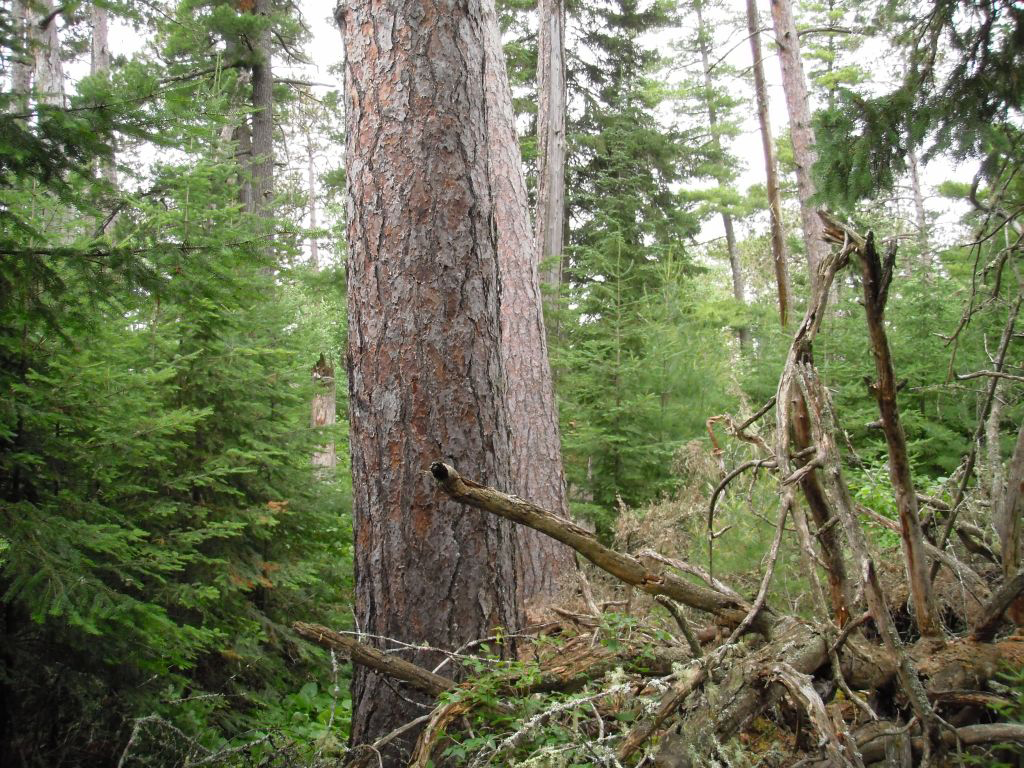
Dynamics and structure of red pine forests in the Lake States
Research focuses on several existing long-term silvicultural experiments within red pine-dominated forests, as well as several remnant old-growth stands located throughout northern Minnesota. Work examines long-term structural development and competitive dynamics in these systems using measurements from long-term studies, as well as dendrochronological approaches.
Project collaborators
USDA Forest Service (B. Palik), UMaine (S. Fraver), USGS (J. Bradford),
University of Helsinki (T. Aakala), UMN (M. Curzon, L. Nagel), MN DNR
(J. Almendiner, B. Marty, H. Tjader).
Selected publications
Palik, B. J., and A. W. D’Amato. 2019. Variable retention harvesting in Great Lakes mixed-pine forests: emulating a natural model in managed ecosystems. Ecological Processes 8:16. PDF
Looney, C. E., A. W. D’Amato, B. J. Palik, S. Fraver, and D. N. Kastendick. 2018. Size-growth relationship, tree spatial patterns, and tree-tree competition influence tree growth and stand complexity in a 160-year red pine chronosequence. Forest Ecology and Management 424:85-94. PDF
*Scherer, S. S., C. C. Kern, A. W. D’Amato, B. J. Palik, and M. R. Russell. 2018. Long-term pine regeneration, shrub layer dynamics, and understory community composition responses to repeated prescribed fire in Pinus resinosa forests. Canadian Journal of Forest Research 48:117-129. PDF
Bottero, A., A. W. D’Amato, B. J. Palik, C. C. Kern, J. B. Bradford, and S. S. Scherer. 2017. Influence of repeated prescribed fire on tree growth and mortality in Pinus resinosa forests, northern Minnesota. Forest Science 63:94-100. PDF
Curzon, M. T., A. W. D’Amato, S. Fraver, E. S. Huff, and B. J. Palik. 2017. Succession, climate and neighbourhood dynamics influence tree growth over time: an 87-year record of change in a Pinus resinosa-dominated forest, Minnesota, USA. Journal of Vegetation Science 28:82-92. PDF
*Roberts, M. W., A. W. D’Amato, C. C. Kern, and B. J. Palik. 2017. Effects of variable retention harvesting on natural tree regeneration in Pinus resinosa (red pine) forests. Forest Ecology and Management 385:104-115. PDF
Young, B. D., A. W. D’Amato, C. C. Kern, D. N. Kastendick, and B. J. Palik. 2017. Seven decades of change in forest structure and composition in Pinus resinosa forests in northern Minnesota, USA: Comparing managed and unmanaged conditions. Forest Ecology and Management 395:92-103. PDF
*Gill, K. G., A. W. D’Amato, and S. Fraver. 2016. Multiple developmental pathways for range-margin Pinus banksiana forests. Canadian Journal of Forest Research 46:200-214. PDF
*Roberts, M. W., A. W. D’Amato, C. C. Kern, and B. J. Palik. 2016. Long-term impacts of variable retention harvesting on ground-layer plant communities in Pinus resinosa forests. Journal of Applied Ecology 53:1106-1116. PDF
*Scherer, S. S., A. W. D’Amato, C. C. Kern, B. J. Palik, and M. B. Russell. 2016. Long-term impacts of prescribed fire on stand structure, growth, mortality, and individual tree vigor in Pinus resinosa forests. Forest Ecology and Management 368:7-16. PDF
Aakala, T., S. Fraver, A.W. D’Amato, and B. Palik. 2013. Influence of competition and age on tree growth in structurally complex old-growth forests in northern Minnesota, USA. Forest Ecology and Management 308: 128-135. PDF
Silver, E.J., S. Fraver, A.W. D’Amato, T. Aakala, and B. J. Palik. 2013a. Long-term mortality rates and spatial patterns in an old-growth Pinus resinosa forest. Canadian Journal of Forest Research 43: 809-816. PDF
Silver, E.J., D’Amato, A.W., Fraver, S., Palik, B.J., Bradford, J.B., 2013b. Structure and development of old-growth, unmanaged second-growth, and extended rotation Pinus resinosa forests in Minnesota, USA. Forest Ecology and Management 291: 110-118. PDF
Aakala, T., S. Fraver, B. Palik, and A.W. D’Amato. 2012. Spatially random mortality in old-growth red pine forests in northern Minnesota. Canadian Journal of Forest Research 42: 899-907. PDF
D’Amato, A.W., J. Segari, and D. Gilmore. 2012. Influence of site preparation on natural regeneration and understory plant communities within red pine shelterwood systems. Northern Journal of Applied Forestry 29: 60-66. PDF